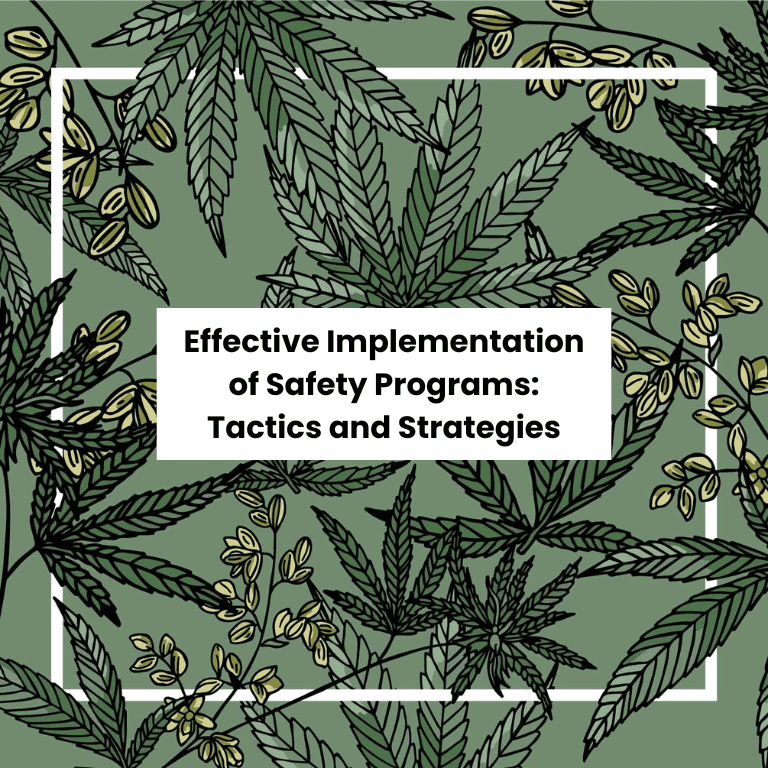Effective Implementation of Safety Programs: Tactics and Strategies

In the burgeoning cannabis industry, where regulations are evolving rapidly and consumer safety is paramount, implementing effective safety programs is essential for businesses to thrive. From cultivation to distribution, every aspect of the cannabis supply chain requires meticulous attention to risk management. Here are some tactics and strategies for successfully implementing safety programs in the cannabis industry.
Comprehensive Risk Assessment
Before implementing any safety program, conducting a comprehensive risk assessment is crucial. Identify potential hazards at every stage of your operations, including cultivation, processing, packaging, and distribution. This assessment should consider factors such as employee safety, product contamination, equipment malfunctions, and regulatory compliance. By understanding the specific risks facing your business, you can develop targeted safety protocols to mitigate these hazards.
Regulatory Compliance
Compliance with state and federal regulations is non-negotiable in the cannabis industry. Stay informed about the latest regulations governing cannabis safety, labeling, testing, and packaging requirements. Develop protocols and procedures to ensure full compliance with these regulations at all times. This may involve regular audits, employee training programs, and documentation processes to track adherence to regulatory standards.
Employee Training and Education
Investing in comprehensive training and education programs for your employees is essential for promoting a culture of safety in your organization. Provide training on proper handling procedures, equipment operation, emergency response protocols, and compliance requirements. Regularly review and update training materials to reflect changes in regulations or best practices. Empower your employees to identify and address safety concerns proactively.
Quality Control and Testing
Implement rigorous quality control measures throughout the production process to ensure the safety and integrity of your cannabis products. This includes regular testing for potency, purity, and contaminants such as pesticides, heavy metals, and microbial contaminants. Partner with accredited testing laboratories to conduct thorough analyses of your products. Establish protocols for batch testing and product recall procedures in the event of a safety issue.
Supply Chain Management
Effective supply chain management is essential for ensuring the safety and traceability of cannabis products from seed to sale. Establish relationships with trusted suppliers who adhere to strict quality standards and testing protocols. Implement robust tracking and documentation systems to trace the origin of each product batch and monitor its movement throughout the supply chain. Regularly audit suppliers and distributors to verify compliance with safety regulations.
Continuous Improvement
Safety is an ongoing process that requires constant vigilance and improvement. Regularly review and evaluate your safety programs to identify areas for enhancement. Solicit feedback from employees, customers, and regulatory agencies to identify potential gaps or weaknesses in your safety protocols. Stay informed about emerging safety trends, technologies, and best practices in the cannabis industry, and be prepared to adapt your safety programs accordingly.
Effective implementation of safety programs is essential for success in the cannabis industry. By conducting comprehensive risk assessments, ensuring regulatory compliance, investing in employee training, implementing rigorous quality control measures, managing the supply chain effectively, and continuously improving safety protocols, cannabis businesses can minimize risks and protect both their customers and their bottom line.











